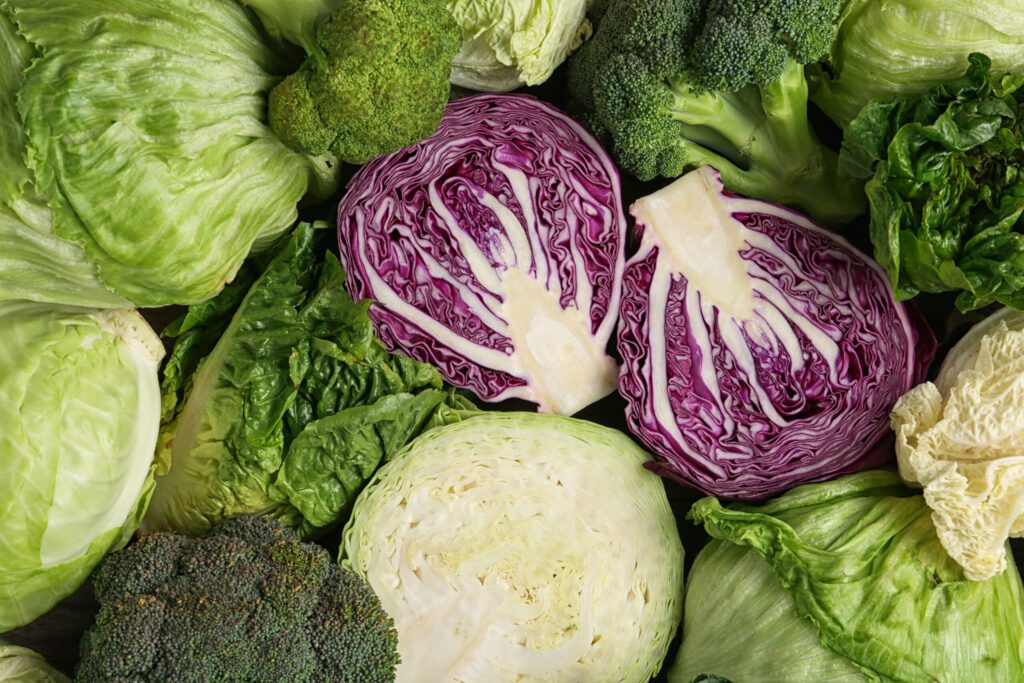Cruciferous Vegetables an Important Crop for Florida
by ERIKA ALDRICH
Sponsored by Farm Credit of Central Florida
With winter in full swing, it’s that time of year when The Sunshine State supplies a decent portion of the country’s cruciferous vegetables, namely broccoli, cabbage, and cauliflower. Cruciferous vegetables are traditional winter vegetables, and Florida’s mild temperatures in the winter months are just what these veggies want to grow. They are all species in the genus Brassica, which is in the mustard family. In fact, broccoli, cabbage, and cauliflower—along with kale, collard greens, Brussel sprouts, and kohlrabi—are all cultivars of Brassica oleracea, or wild cabbage, and they were cultivated through selective breeding by humans over centuries to have the different variations we know today. Explore their cultivation in Florida in today’s modern times, and see their economic impact as a part of Florida agriculture by the numbers.
Florida’s Cruciferous Vegetables
It’s believed that wild cabbage was first cultivated in the ancient northern Mediterranean, and the plant then traveled all over Europe where it was cultivated into the different vegetables we know today. Florida’s mild winter climate is perfect for these cool weather-loving veggies. While Florida does not lead the country in the production of any of these cruciferous vegetables, they are an important winter crop full of nutrition.
Broccoli
Broccoli is jam-packed with nutritional goodness, coming in amongst the top 20 foods according to its Aggregate Nutrient Density Index (ANDI) score, which is the measurement of a food’s vitamin, mineral, and phytonutrient value in relation to its calories. Broccoli is full of vitamins C and K, fiber, vitamin A, folate, and potassium.
According to the 2017 USDA Ag Census, Florida had 168 farms that grew 1,317 acres of broccoli. There are few statistics concerning broccoli production in Florida because it is not a large part of the agriculture industry, but the USDA’s National Agricultural Statistical Service reported that Florida produced 2,890 CWT of organic broccoli in 2019 for a fresh market sales value of $189,808.
Cabbage
Cabbage is grown in every state in the U.S., and Florida is among the five top states for growing cabbage. UF/IFAS maintains that Florida grows cabbage exclusively for the fresh market, providing a “higher-quality cabbage” in the timeframes of late fall, winter, and early spring during those periods where most other areas of the country are unable to grow cabbage. The 2017 Census of Agriculture maintained that Florida’s 164 cabbage farms grew 9,156 acres of cabbage.
In Florida, cabbage is largely grown in northeast Florida, in counties like Flagler and St. Johns, with 20% of the state’s cabbage growers and over 50% of the state’s cabbage acreage located there. Southeast Florida’s Palm Beach county is another large cabbage-growing area in the state.
Florida’s cabbage production has always been an important part of the country’s overall production. According to UF EDIS, Florida was third in the production of fresh market cabbage in 2010, and third in harvested acres and yield, and second in crop value in 2011.
According to the Florida Department of Agriculture and Consumer Services (FDACS), in 2017, Florida ranked second in the nation in value of production of fresh market cabbage. Fresh market cabbage was valued at $42 million in 2017, which was 11 percent of the total U.S. value.
USDA’s NASS reported that the 2019 total cabbage production value for Florida was $58,394,000.
Cauliflower
Cauliflower is another nutritionally dense cruciferous vegetable that Florida produces, but on a very small scale. The 2017 Census of Agriculture counted 78 farms growing cauliflower on 354 acres.
All cruciferous vegetables are high in vitamins, minerals, and other nutrients, making them an important crop for meeting the nation’s nutritional needs. Their prevalence throughout Florida means you hardly have to travel far to find the freshest available!


